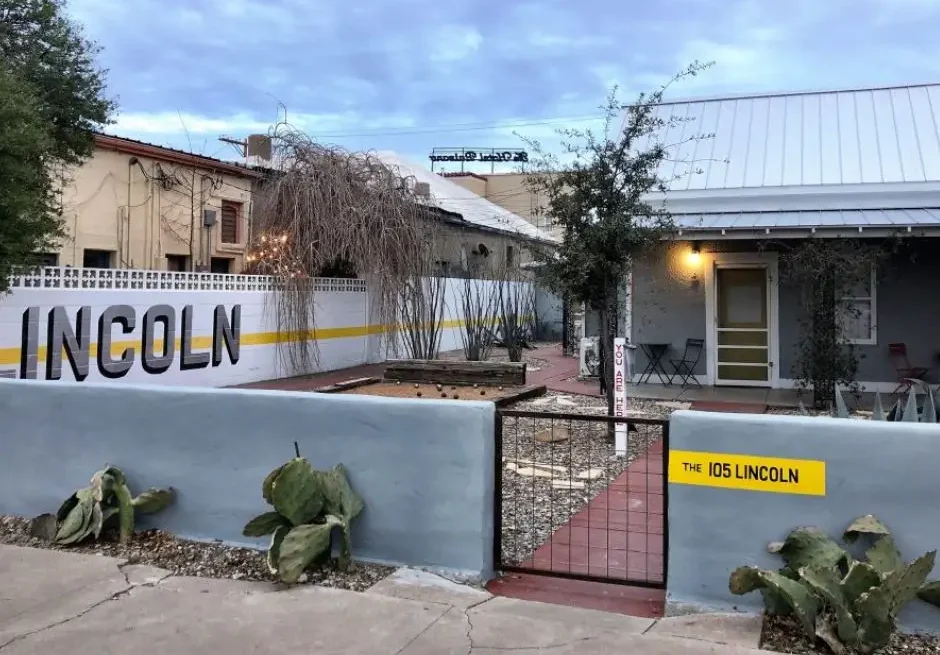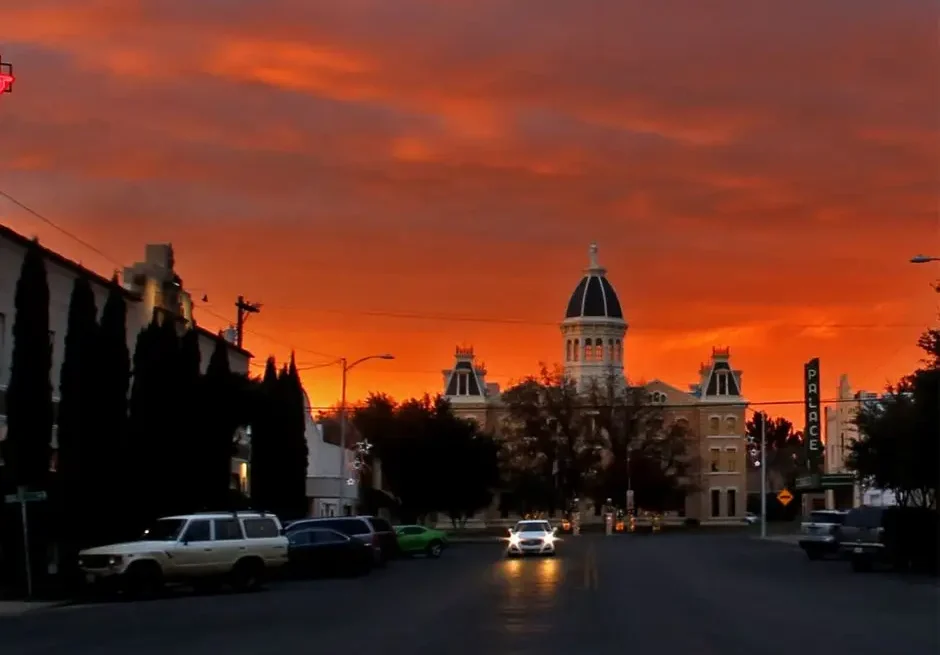The desert hums here.
Light spills across the mountains. Silence stretches like canvas.
And then, out of nowhere, a gleaming metal box catches the sun. Or a pink neon light flickers inside an old barrack. Or a Prada boutique appears in the middle of nowhere.
That’s Marfa for Art Lovers
A tiny town in far West Texas that somehow became one of the most influential art destinations in the world.
Here, art isn’t locked behind glass. It’s spread across the land — part of the sky, the buildings, even the dust. Minimalism meets landscape. High art meets open space.
This guide is for you — the art lover, the wanderer, the one who sees beauty in quiet places.
We’ll spend three days diving deep into Marfa’s art scene, exploring its museums, installations, and moments that live between the lines.
So pack your curiosity and hit the desert road.
A Quick Look at Marfa’s Creative Soul
Marfa didn’t start as an art town. It was once a quiet railroad stop, a place for ranchers and drifters. Then, in the 1970s, artist Donald Judd arrived from New York City — tired of crowded galleries and looking for space.
He found it here.
Judd bought old buildings, military hangars, and a decommissioned fort. Then he filled them with large-scale installations that never moved again.
His vision transformed Marfa into a living museum of minimalism, where art, architecture, and landscape exist as one.
Today, his legacy shapes everything. But Marfa’s art scene has grown beyond Judd. It’s experimental, local, global, and full of creative tension — all set against a backdrop of desert silence.
Ready to explore? Let’s break it down day by day.
Day 1 – Immersive Art & Architecture
Your first day is all about scale — the big names, big ideas, and the wide-open desert that inspired it all.
Morning: The Chinati Foundation
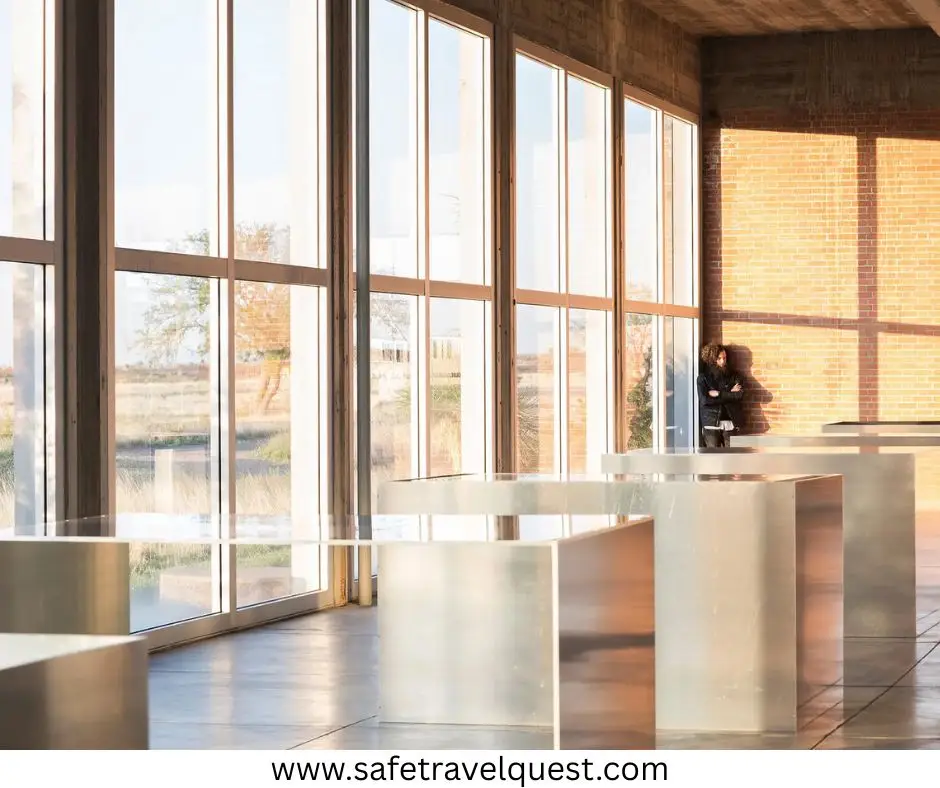
Start early at The Chinati Foundation, the heart of Marfa’s art world.
You’ll find it on the southwest edge of town, inside the old Fort D.A. Russell. The museum spans 340 acres of desert land, filled with permanent installations by Donald Judd and a handful of his contemporaries.
Begin with Judd’s famous 100 untitled works in mill aluminum — perfectly placed boxes glowing with natural light inside long artillery sheds. Each box is identical in size but unique inside. They change with every minute of the day.
Then step outside to see his 15 concrete works stretching across the grassland. The desert wind moves through them like breath. Walk among them slowly. Let the space do its work.
Before you leave, wander through Dan Flavin’s light installations, six barracks glowing in pinks, greens, and yellows. The color shifts as you move — part art, part science, part magic.
(Tip: Book the full collection tour in advance on the Chinati website. It usually lasts about three hours.)
Afternoon: Downtown Galleries

After the vastness of Chinati, head downtown for a change of scale.
Stop for lunch at The Water Stop or Aster Marfa — both casual spots with good salads, sandwiches, and desert sunshine.
Then explore Marfa’s smaller galleries, each offering its own take on the art-meets-desert story.
Start with Ballroom Marfa, a nonprofit contemporary art space housed in a 1920s dance hall. Its rotating exhibits range from immersive installations to film screenings and outdoor sound projects.
A few blocks away, drop into Rule Gallery, which showcases cutting-edge work from both regional and national artists.
Then swing by Eugene Binder Gallery, known for bold, modern pieces that contrast beautifully with its old brick exterior.
If you have time, peek into Marfa Open Gallery or Fieldwork Marfa, where visiting artists experiment with the landscape as part of their process.
Downtown is compact, so take your time. Pop in. Step back out. Let each space sink in.
Evening: Sunset Over Judd’s Concrete Works

There’s no better way to end your first day than returning to Judd’s concrete installations at Chinati.
They face west. That means at sunset, they catch the full glow — orange light bouncing off the concrete, stretching long shadows across the field.
Bring water. Sit on the ground. Watch the desert turn gold, then gray, then deep indigo.
Later, stop by The Water Stop Bar or Bar Saint George for a cocktail. Locals, artists, and travelers all end up there eventually, swapping stories about the light, the landscape, and the strange pull of this place.
Day 2 – Modern Art & Local Creativity
After a deep dive into minimalism, day two is about texture — the living side of Marfa’s art community.
Morning: Coffee and Local Studios
Start at The Sentinel, a café and newspaper lounge that doubles as a creative space.
Grab a cappuccino, flip through local prints, and check the community board — you might spot an art opening or workshop happening that evening.
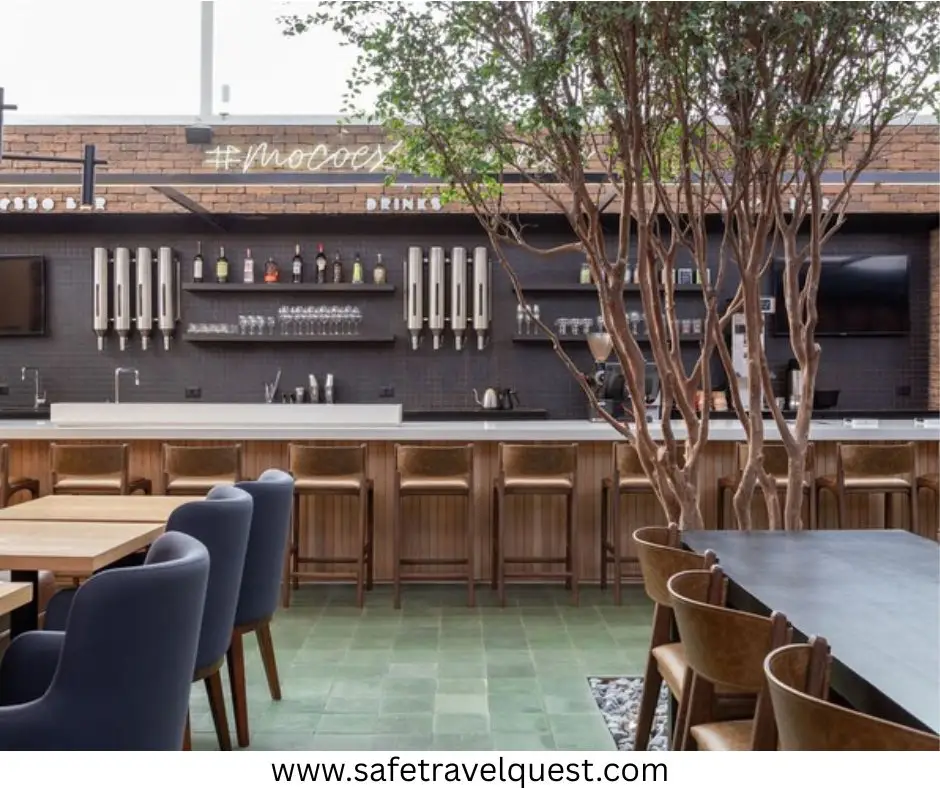
From there, walk to the Marfa Studio of Arts, a nonprofit that supports local and youth creativity. Their small exhibitions often feature works from regional artists who bring color and storytelling into the minimalist landscape.
Next, visit Inde/Jacobs Gallery, a must-see for collectors and design lovers. The space itself feels like an artwork — precise, geometric, bathed in natural light. Inside, you’ll find pieces by Donald Judd, Dan Flavin, and other artists who shaped modern minimalism.
Take your time. Everything in Marfa asks you to look slowly.
Afternoon: Prada Marfa Pilgrimage
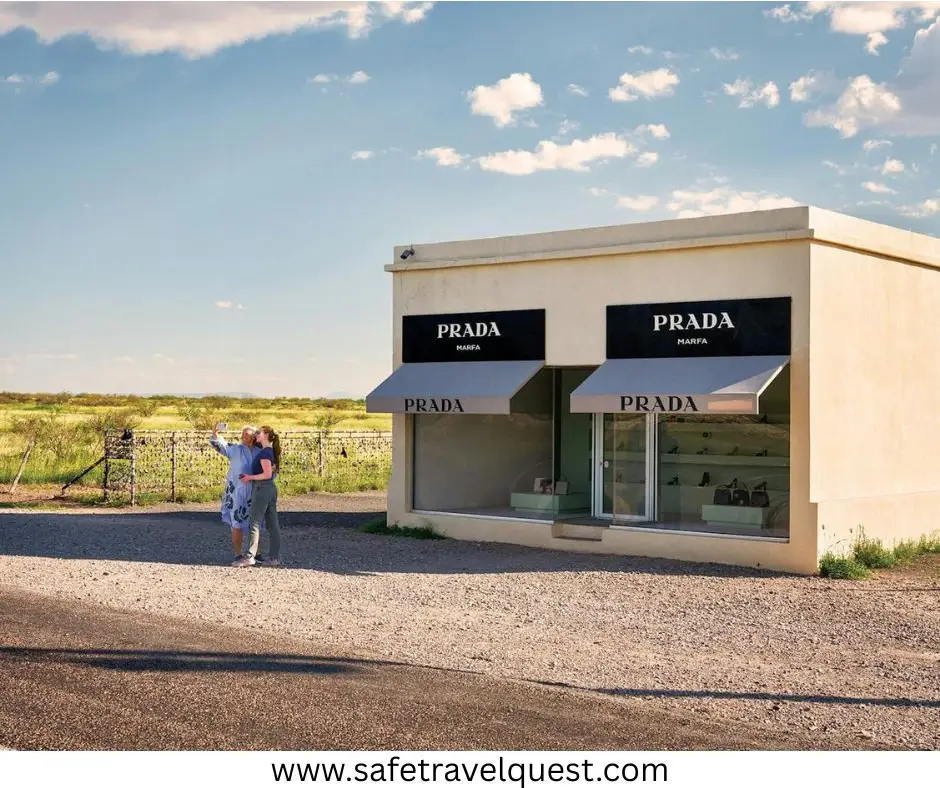
No Marfa art itinerary is complete without the drive to Prada Marfa.
Hop on Highway 90 and head west toward Valentine, about 30 minutes away. You’ll see it suddenly — a pristine Prada storefront standing alone in the desert, surrounded by nothing but wind and sky.
Created in 2005 by artists Elmgreen & Dragset, it’s one of the world’s most famous land art installations. Inside are real Prada handbags and shoes donated by Miuccia Prada herself. But the doors never open.
It’s both hilarious and haunting — a commentary on consumerism, isolation, and beauty in decay.
Take a few photos, then just stand there for a while. The silence makes the whole thing surreal.
On your way back, stop at the tiny Valentine Post Office for a dose of small-town nostalgia.
Evening: Art Meets Community

Back in Marfa, unwind with dinner at Al Campo, a wine garden filled with string lights, outdoor tables, and conversation.
If you still have energy, stop by Planet Marfa, a quirky outdoor bar with a beer garden, ping-pong tables, and locals who will happily talk about art, weather, or anything in between.
Marfa’s social scene is small but genuine. You’ll likely meet a painter, a photographer, or someone who moved here “just for a few months” and never left.
That’s the rhythm of this town — slow, open, endlessly creative.
Day 3 – Slow Art & Open Desert
By now, you’ve seen the icons. Day three is about going deeper — stepping inside the spaces where art and daily life overlap.
Morning: Donald Judd Home & Studio
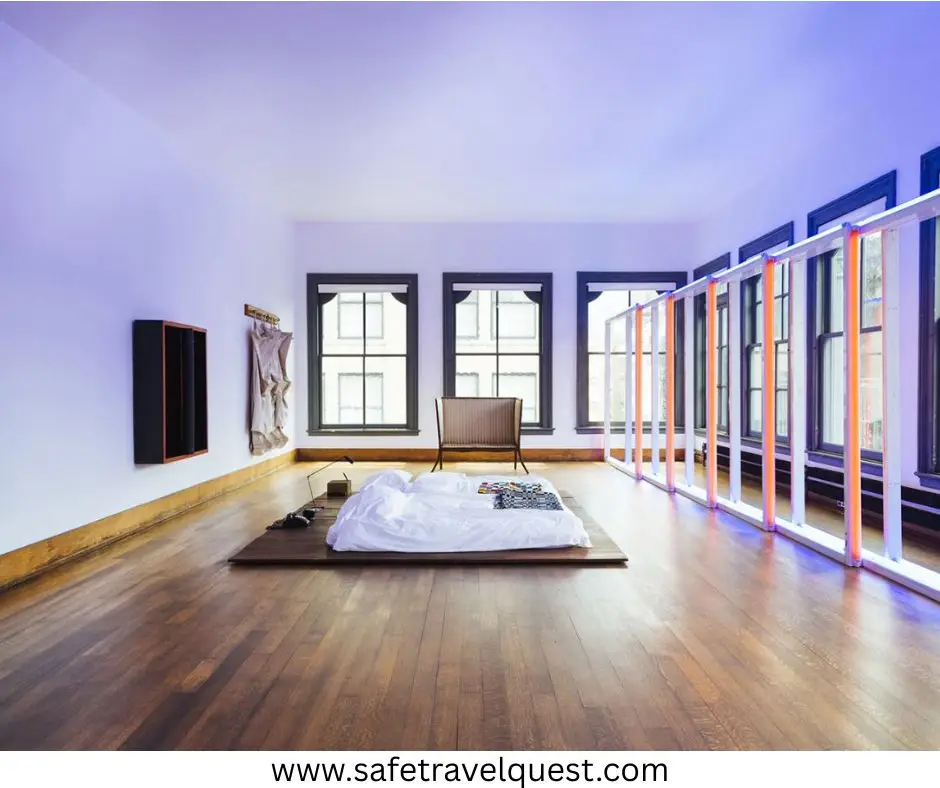
Start with a visit to Donald Judd’s Home and Studio on West Oak Street.
It’s not a museum. It’s the artist’s preserved living space — a glimpse into how he worked, collected, and thought about form.
Everything here is deliberate: the placement of a chair, the width of a window, the way light falls on a table.
Tours are limited and must be booked in advance through the Judd Foundation. It’s intimate, quiet, and surprisingly human — less about fame, more about process.
Afternoon: Experimental Art Spaces
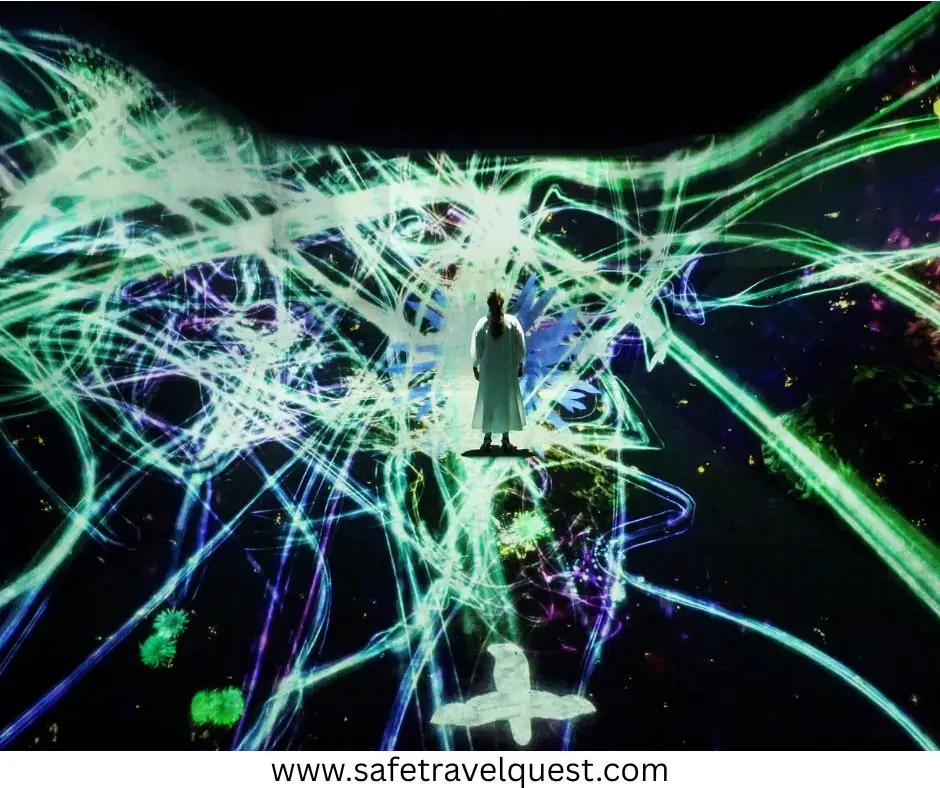
After the tour, grab lunch at Do Your Thing, a café known for strong coffee and thick toast topped with seasonal ingredients.
Then head to Fieldwork Marfa, a collaborative residency where artists and researchers create temporary installations that respond to the land. The projects change often, so you never know what you’ll find — sculptures made of wind-blown materials, video projections, or ephemeral works that vanish with the weather.
A few blocks away, stop by Wrong Marfa, the bold and playful gallery-shop run by artists Buck Johnston and Camp Bosworth. It’s full of color, humor, and tongue-in-cheek pieces that balance the town’s more austere minimalism.
This is the other side of Marfa’s art scene — irreverent, wild, and deeply local.
Evening: Desert Nights
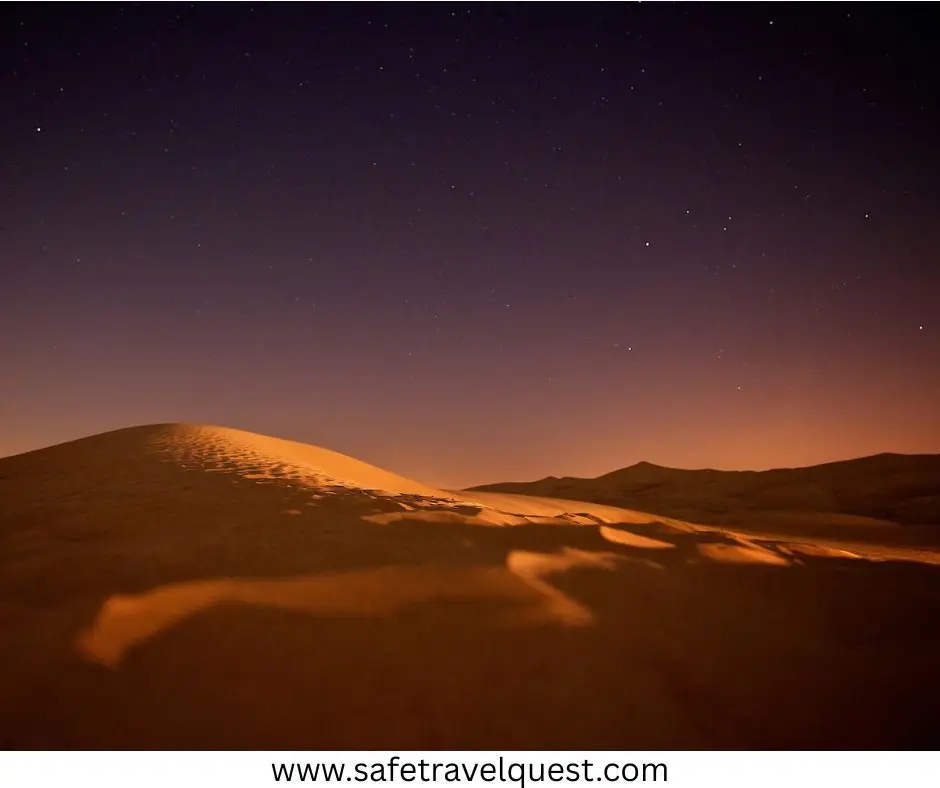
For your final evening, skip the screens and head into the night.
Drive a few miles east on Highway 90 to the Marfa Lights Viewing Area. Bring a blanket, some snacks, and patience.
Maybe you’ll see them — glowing orbs that appear and disappear over the desert plain. Maybe you won’t.
Either way, the starlit silence feels like art in itself.
If you’re staying at El Cosmico, end your trip with a soak in an outdoor tub and a view of the Milky Way.
There’s no better way to close a three-day creative escape.
Honorable Mentions & Hidden Gems
Marfa rewards curiosity. Wander a few extra blocks, and you’ll find treasures everywhere.
- Chinati Weekend (October): Marfa’s biggest annual art event, featuring open studios, installations, and performances. The entire town transforms into one giant gallery.
- Communitie Marfa: A minimalist lifestyle shop by designer John Patrick, offering woven hats, blankets, and books — art disguised as everyday objects.
- Freda: A women’s boutique that doubles as a design studio, full of handcrafted jewelry and sustainable fashion pieces that feel like wearable art.
- Art-inspired cafés: Do Your Thing and Aster Marfa both blur the line between food and creative expression, with spaces designed to linger.
- Marfa Wine Co.: Half wine shop, half art installation — because in Marfa, even a bottle of rosé feels conceptual.
Marfa for Art Lovers Tips
- Book ahead. The Chinati Foundation and Judd Foundation tours fill up weeks in advance.
- Mind the hours. Many galleries open late and close early — typically between 11 a.m. and 5 p.m.
- Wear comfortable shoes. You’ll walk across gravel, grass, and plenty of sun.
- Stay hydrated. The desert is beautiful but dry. Bring water wherever you go.
- Check event calendars. Art shows, pop-ups, and film screenings often align with weekends or festivals.
- Respect the work. Many installations are on private land. Always ask before photographing or touching.
A little preparation turns your trip into an unforgettable deep dive.
Read:Where to Find the Best Coffee Shops in Marfa Texas: 10 Area Recommendations
Local Voices
Ask a local about art in Marfa, and you’ll get a quiet smile.
They’ve seen it all — the artists who came, the ones who stayed, the ones who left. For many residents, art isn’t something separate. It’s part of the landscape, like the wind or the light.
One gallery owner told me, “Out here, you can’t fake it. The desert doesn’t let you.”
That’s the truth. The art that lasts here feels honest — stripped down, shaped by space and solitude.
And somehow, the community manages to balance both worlds: the high-profile art crowd that flies in for weekends, and the locals who make beauty out of everyday life.
It’s a mix that keeps Marfa alive — mysterious but welcoming, ambitious but grounded.
FAQs About Marfa’s Art Scene
Why is Marfa famous for art?
Because artist Donald Judd transformed it in the 1970s into a center for minimalism and land art. His legacy sparked a creative movement that continues today.
Can you visit the Chinati Foundation without a tour?
Some areas are open for self-guided visits, but to see Judd’s major works and Dan Flavin’s light installations, you’ll need a guided tour.
What is the best time to visit for art events?
Fall and spring, especially during Chinati Weekend in October or local art walks in March and April.
Is there public art around town?
Yes. You’ll find murals, sculptures, and installations scattered around downtown, plus Prada Marfa just outside town.
How long should you stay to see everything?
Three days is ideal — long enough to visit the main sites, explore small galleries, and catch a few sunsets in between.
A Personal Note
My first trip to Marfa happened on a whim. I thought I’d see a few famous installations, take some photos, and move on.
Instead, I stayed for days — wandering between concrete blocks, neon lights, and quiet cafés that felt like part of the same artwork.
One afternoon, I stood inside a Chinati hangar, surrounded by Judd’s aluminum boxes. The air shimmered. The light moved. Nothing else happened — and somehow, that was everything.
That’s Marfa. It asks nothing of you but your attention.
Final Thoughts
Marfa doesn’t just show you art. It changes how you see.
It’s not about galleries or labels or price tags. It’s about the space between things — between desert silence and color, between architecture and sky.
You come for the installations. You stay for the feeling that lingers long after.
So pack your curiosity. Bring an open mind.
Let the desert lead.
Because in Marfa, the art isn’t waiting in a museum — it’s waiting under the West Texas sky.

I am a passionate writer who creates engaging, creative, and meaningful content that informs, inspires, and connects with diverse audiences.


